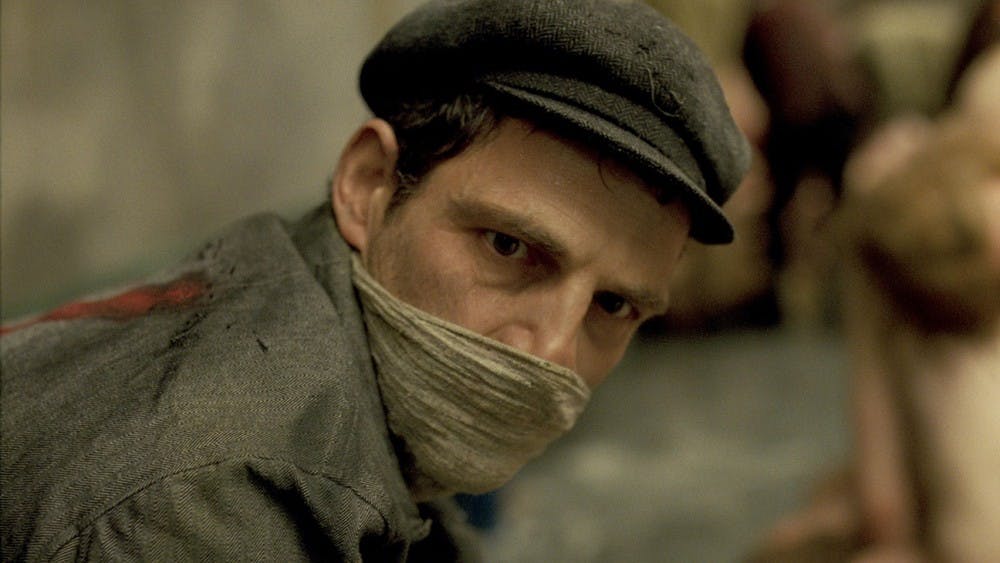When it comes to directorial debuts, few films hit the mark as well as “Son of Saul,” Hungarian filmmaker László Nemes’ first effort. Written by Nemes and Clara Royer, the film centers upon the Auschwitz-Birkenau death camp of World War II. “Son of Saul” is a powerful work, one that employs elements of emotion and ambiguity, combining them within a framework of fundamental themes and unique filming techniques. While the movie certainly isn’t perfect, it is a wonderful work of cinema.
The film’s protagonist is Saul Ausländer, a prisoner of the Auschwitz-Birkenau death camp in Poland during World War II. Ausländer is a member of a Sonderkommando, a group of Jewish captives forced by the Nazis to assist in churning the machine of extermination.
Rather jarringly, the film does not gradually insert itself into such abhorrent circumstances, but instead plunges the viewer directly into the chaos with an incredibly strong opening scene, truly and potently setting the tone of the movie. Death and a constant disregard for the sanctity of human life are commonplace, which shocks and desensitizes the viewer.
Nemes exacerbates this strategy by distorting the character’s surroundings. Throughout most of the movie, the camera magnifies its view on Ausländer, minimizing and blurring the surrounding spaces. While this could be seen as a display of timidity in presenting the gory aspects of the Holocaust, it ultimately augments Nemes’ probable thematic intent, which is to place the focus almost entirely on Ausländer and reinforce a survivalist and understandably self-centered mentality.
The film also employs long shots of largely static environments. This emphasizes the inherent dynamism that is beautifully conveyed by the nuances of the acting and facial expressions. Ultimately, “Son of Saul” is such a tour de force in filming style because each technique builds upon one another in a cohesive and meaningful way.
Géza Röhrig portrays Ausländer in a highly effective manner. He doesn’t steal the show with an overpowering performance — doing so would have tainted the film. While Ausländer demonstrates conviction in his motivations, there is an inherent weakness in his character, shown through the frailty of his voice and the unsanitary nature of his physical appearance. However, such aspects of his character are necessary because they communicate a sense of reality and truly transport the viewer into the degradation of the Holocaust.
Ausländer’s motivations themselves are targets of scrutiny, both from the audience and from other characters in the film. The source of these suspicions exemplifies another feat of Nemes’ filmmaking: ambiguity. Things that are believed to be facts near the beginning of the movie become merely questionable propositions over the course of the film, adding a sense of mystery to the simple yet gripping plotline.
“Son of Saul” is a true work of art. It is not an inherently enjoyable movie, but it is not supposed to be. It merely tells a story, one that evokes great emotional response from its viewers while also offering motivations and mysteries to scrutinize. As a case study in powerful filmmaking, “Son of Saul” has few peers.







